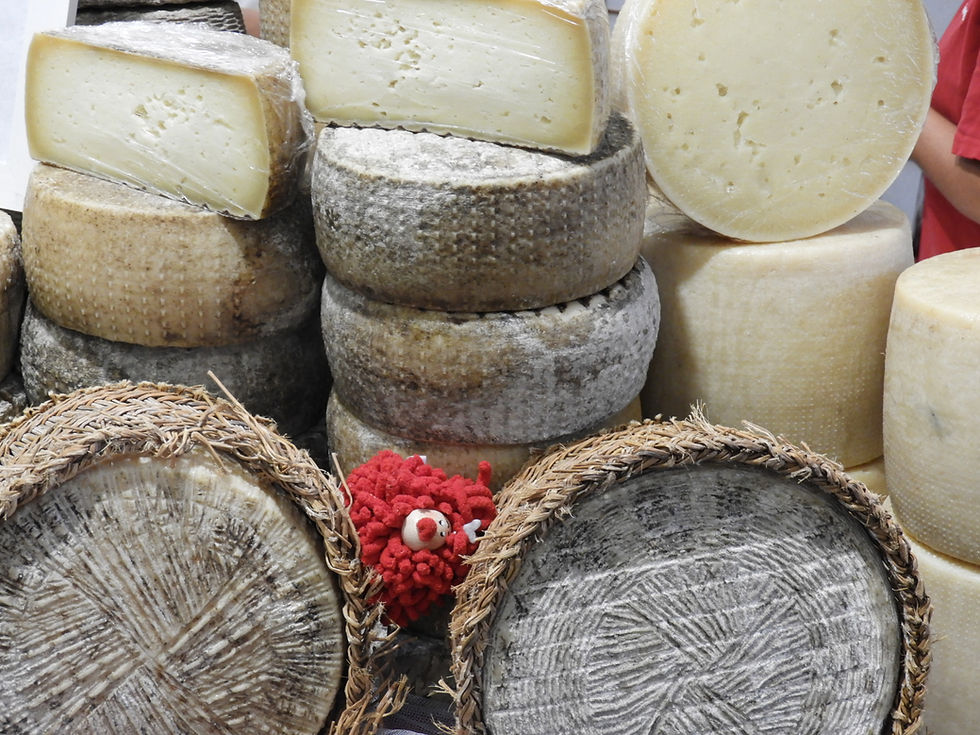Calabria
- Aug 26
- 2 min read
Geography and Location
Calabria is positioned at the 'toe' of the Italian boot-shaped peninsula. It shares its northern border with Basilicata, its south-western boundary with Sicily, its western edge with the Tyrrhenian Sea, and its eastern perimeter with the Ionian Sea. The region encompasses 15,081 square kilometres and is home to approximately 2.9 million people. Catanzaro serves as the capital, and Calabria is divided into five provinces: Catanzaro, Cosenza, Crotone, Reggio Calabria, and Vibo Valentia. Stretching 248 kilometres from north to south and reaching a maximum width of 110 kilometres, Calabria is separated from Sicily by the Strait of Messina. At its narrowest point, between Capo Peloro in Sicily and Punta Pezzo in Calabria, the strait is only 3.2 kilometres across.

Economy and Agriculture
Historically, Calabria was among the poorer regions of Italy. However, recent economic stimulation efforts by the government, such as land reform, the introduction of new crops, and the promotion of tourism, have contributed to its development. Agriculture remains the backbone of Calabria’s economy, with olives, plums, grapes, citrus fruits, and wheat as the principal crops. The region also supports livestock, particularly sheep and goats, and boasts a well-developed fishing industry along the Strait of Messina.
Natural Beauty and National Parks
Calabria is renowned for its stunning seaside resorts and long stretches of white sandy beaches with warm, crystal-clear waters. The region’s vibrant nightlife is centred around its many bars and restaurants. Inland, Calabria is predominantly mountainous, featuring three major ranges: the Pollino, the Sila, and Aspromonte, each designated as a National Park with distinctive flora and fauna.
The rugged Pollino Mountains form a natural barrier in the north, separating Calabria from the rest of Italy. La Sila is an expansive mountainous plateau rising about 1,200 metres above sea level and covering nearly 2,000 square kilometres in the central part of Calabria. This area, also a national park, is noted for its lakes and dense coniferous forests, which evoke landscapes more typical of Switzerland or Canada. The Bosco di Fallistro, near Camigliatello, is especially famous for the 'Giganti della Sila', ancient trees over 500 years old, measuring six feet across and reaching heights of 130 feet. The Aspromonte National Park occupies the southernmost tip of the peninsula, surrounded by the sea on three sides.
Food and Wine of Calabria
Pasta with vegetables is the cornerstone of Calabrian cuisine, with numerous local variations. The region’s fertile land produces excellent vegetables, including sweet peppers, artichokes, zucchini, eggplant, and mushrooms. Coastal residents enjoy swordfish and freshly caught seafood, while those living inland rely on lamb, pork sausage, and goat for their protein. Calabria is also known for its cheeses, such as Caciacavello di Cimina, Felciata, Pecorino del Monte Poro, and Ricotta.
After the fall of Rome, Calabrian wines faded from prominence but saw resurgence by the 14th century, when exports to North Sea cities became significant. The region’s primary DOC wine is CIRO, available in red, rosé, and white varieties. Additionally, wines are produced from grape varieties such as Aglianico, Biancoletta, Falangina, Fiano di Tufo, and Taurasi.




Comments